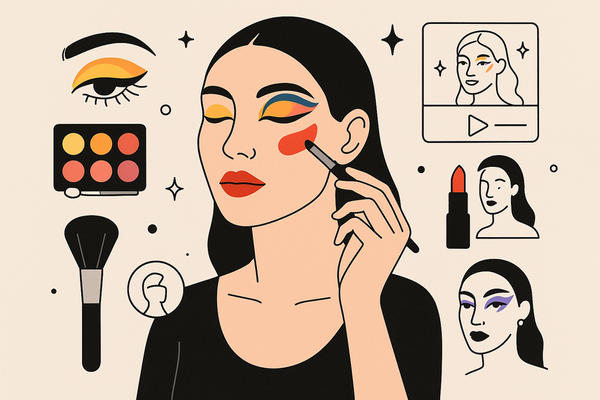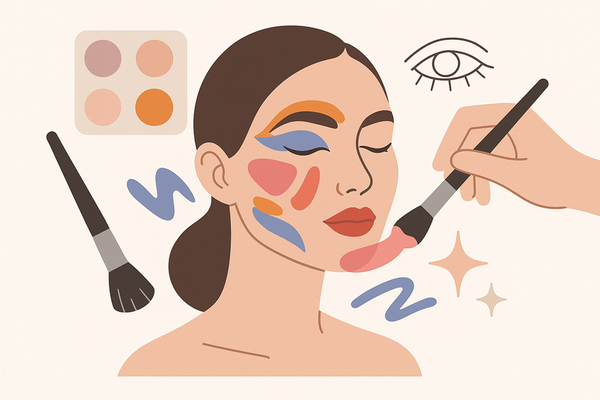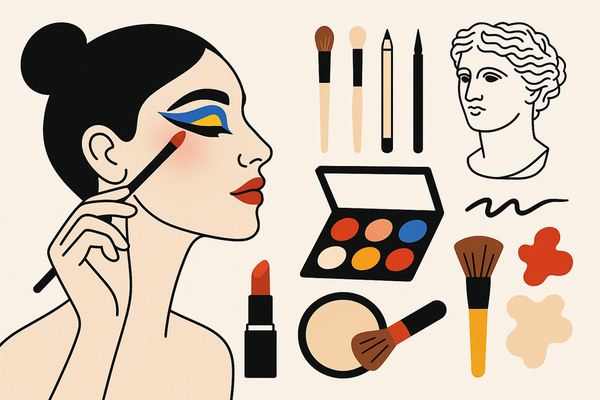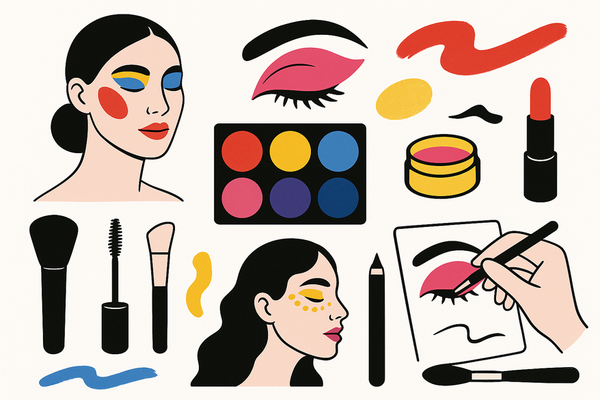Mastering Creative Makeup Designs: Techniques, Tools, and Inspiration
Explore the art of creative makeup designs with techniques, tools, and inspiration. Discover how to transform your face or body into a work of art.
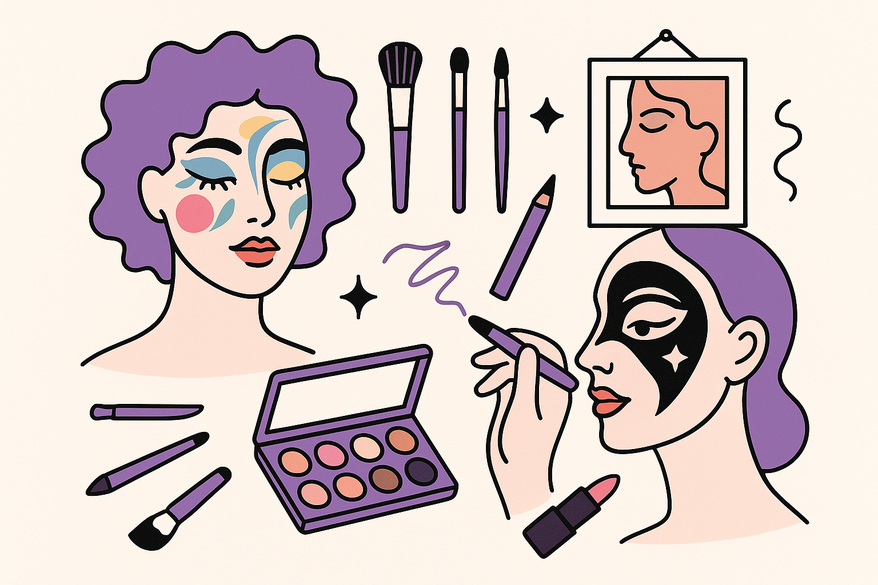
Estimated reading time: 8 minutes
Key Takeaways
- Artistic Expression: Creative makeup transforms the face or body into a vivid canvas with bold colors, textures, and mixed-media details.
- Essential Toolkit: High-pigment eyeshadows, airbrush systems, prosthetics, special-effects adhesives, and 3D appliqués are key to standout looks.
- Signature Techniques: Contouring for sculptural effect, gradient blending, airbrushing, prosthetic application, and strategic embellishments drive modern designs.
- Emerging Trends: Neon and duochrome pigments, glitter mixes, geometric patterns, and architectural shapes dominate social media and runways.
- Step-by-Step Workflow: Research, sketch, prepare the skin, layer pigments, sculpt with contours, add textures, and finish with setting spray for long wear.
Table of Contents
- Definition and Background of Creative Makeup Designs
- Key Elements of Creative Makeup Designs
- Popular Techniques and Trends
- Step-by-Step Guides and Tutorials
- Inspiration and Examples
- Additional Resources and Tips
- Conclusion
Definition and Background of Creative Makeup Designs
Creative makeup designs are cosmetics used as a form of artistic expression, transforming the face or body into a canvas for visually striking and imaginative effects. These looks go beyond everyday beauty routines to showcase personality, tell a story, and push boundaries with bold colors, unconventional textures, and mixed-media details. Sources like Design Encyclopedia and the Creative Makeup Designs Guide explore this evolution in depth.
Today, you’ll spot creative makeup from fashion runways to social feeds, where bold neon palettes, mythical creatures, and abstract patterns capture attention and spark conversation.
For a seamless way to prototype your boldest ideas virtually, tools like Makeup Check AI offer AI-powered previews and instant product matches without any guesswork.
Brief History
- Ancient rituals: Natural pigments like ochre and charcoal served symbolic body paint.
- Theatrical stage makeup: Greasepaint projected emotions under bright lights.
- Avant-garde era: Designers like Leigh Bowery embraced performance art and surreal silhouettes.
- Digital experimentation: Augmented reality (AR) filters and virtual try-ons enable rapid creative iteration according to creative makeup designs AI.
Role of Social Media & Technology
- TikTok challenges and Instagram reels spotlight everyday artists.
- Virtual makeup apps let you test neon gradients or chrome flakes before purchase.
- Digital tutorials democratize avant-garde techniques, accelerating global trends.
The industry now regards cosmetic artistry as fine art and performance. From Paris runways to indie SFX contests, innovation and imagination drive makeup forward.
Key Elements of Creative Makeup Designs
Essential tools, materials, and techniques form the foundation of any standout creative makeup design.
Essential Tools & Materials
- High-pigment eyeshadows and loose pigments for bold, opaque color payoff.
- Airbrush systems to achieve smooth gradients and full-coverage bases.
- Prosthetic kits and liquid latex for 3D shapes and textures.
- Special-effects adhesives to secure rhinestones, feathers, or silicone appliqués.
- Glitters, chrome flakes, and 3D appliqués for multi-dimensional accents.
- Specialized brushes and sponges: stiff-bristle for fine lines, fan brushes to dust off excess, and beauty blenders for flawless blending.
Product Selection Tips
- Choose waterproof, long-wear formulas to support multi-layered designs and resist sweat or tears.
- Opt for a mix of matte, shimmer, and metallic finishes to create contrast.
- Invest in cruelty-free, skin-safe pigments and adhesives to protect skin health.
Technique & Practice
- Master blending by alternating between brush and sponge for seamless transitions.
- Layer textures—apply creams before powders to lock pigments in place.
- Practice edge-work: soften or sharpen outlines depending on your graphic or painterly style.
- Discover more avant-garde methods in artistic makeup inspiration AI.
Popular Techniques and Trends
Uncover the top methods and cutting-edge looks shaping the creative makeup landscape.
Key Creative Techniques
- Contouring & shading for sculptural effects using cool and warm tones.
- Color blending and gradient transitions for seamless ombrés.
- Airbrushing for sharp lines, polka dots, or full-coverage graphic designs.
- Prosthetic application for 3D elements like horns, scales, or alien textures.
- Embellishment placement with glitter, rhinestones, and sequins for strategic sparkle.
Current Trends
- Neon and duochrome pigments that glow under UV light.
- Glitter mixes and chrome flakes in micro and chunky sizes for galaxy or mermaid vibes.
- Geometric lines and abstract patterns blending sharp angles with free-form art.
- Sculptural, architectural shapes: high-relief cheekbones, winged arches, and futuristic silhouettes.
Step-by-Step Guides and Tutorials
Follow this creative process to build complex, show-stopping looks from concept to finish.
- Research & Moodboarding
Gather color palettes, textures, and inspirational imagery. - Sketching on Face Charts
Map color placement, 3D elements, and fine lines on paper or digital templates. - Skin Preparation
Cleanse, tone, moisturize, and prime for an even, hydrated base. - Layering Base Colors
Apply foundation or tinted moisturizer, then build pigmented designs with brushes or airbrush. - Sculpting with Contours & Highlights
Use cool contour shades to create depth and highlighter to accentuate structure. - Adding Textures/3D Effects
Apply liquid latex or prosthetic pieces, then secure glitters and appliqués with special-effects adhesive. - Blending & Edge Work
Soften or sharpen lines with detail brushes or sponge edges. - Setting & Finishing
Lock makeup with translucent powder and setting spray. Seal glitters to prevent fallout.
Inspiration and Examples of Creative Makeup Designs
Real-world examples and thematic ideas to ignite your next project.
Gallery Ideas
- Butterfly-inspired winged brows with multicolor lid gradients.
- Galaxy face: dark gradient base, splattered white dots, and iridescent flakes.
- Optical illusion makeup: trompe-l’œil lips or negative-space graphic shapes.
- Editorial runway pieces: floating arches, exaggerated cheek cutouts, and sculpted latex decals.
Sources of Inspiration & Translation Tips
- Art Movements: Recreate Impressionist brushstrokes or Cubist angles using block colors.
- Fashion Trends: Adapt runway palettes and fabric textures through pigment choices.
- Nature Motifs: Use leaf stencils or freehand floral designs for organic patterns.
- Technology & Pop Culture: Test neon looks virtually before physical application.
Additional Resources and Tips for Creative Makeup Designs
- Online Makeup Academy inspiration blog: Trend reports and artist interviews.
- Brushstroke creative artist tips: Step-by-step avant-garde guides.
- AAFT Types of Makeup guide: Foundational techniques across beauty and SFX makeup.
Conclusion
Creative makeup designs transform faces and bodies into living artworks. You now have a clear definition, an essential tool guide, top techniques, step-by-step workflows, inspirational sources, and pro resources to elevate your craft. Innovation, technical skill, and consistent practice drive standout creative makeup designs. Start small, experiment boldly, and build a unique visual language. Your next masterpiece is just a brushstroke away.
FAQ
- What is the difference between creative and traditional makeup?
Traditional makeup focuses on correction and enhancement, while creative makeup emphasizes storytelling, bold colors, and experimental textures. - Which tools do I need to start?
Begin with high-pigment eyeshadows, quality brushes, an airbrush system (optional), and safe adhesives for rhinestones or glitters. - How do I choose pigments and adhesives?
Opt for waterproof, long-wear, cruelty-free formulas and skin-safe adhesives to ensure durability and safety. - Which techniques are best for beginners?
Start with basic blending, simple contouring, and small embellishment placements before moving into prosthetics or airbrushing. - Where can I find ongoing inspiration?
Follow online communities, tutorials on social media, and blogs like Creative Makeup Designs Guide for fresh ideas and trends.

